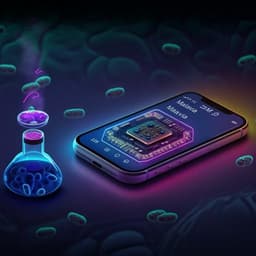
Engineering and Technology
Circadian humidity fluctuation induced capillary flow for sustainable mobile energy
J. Tang, Y. Zhao, et al.
Discover an innovative energy harvesting method by Jiayue Tang, Yuanyuan Zhao, and colleagues that harnesses daily humidity fluctuations to generate electricity. By employing spherical ionic liquid droplets on a nanowire array, this research reveals a sustainable energy source capable of powering LEDs and LCD screens.
Playback language: English
Related Publications
Explore these studies to deepen your understanding of the subject.







